OKEON Churamori project’s coordinator Dr. Yoshimura was interviewed as part of a FM Naha’s radio program “Magical Mystery Tour”. He talk about the project and how it had evolved since last year’s kick-off. This is the second radio interview with Typhoon FM and it lasted for an hour.
Author: ArilabAdmin
Joint talk event between OIST and the Okinawa Municipal Museum this Sunday
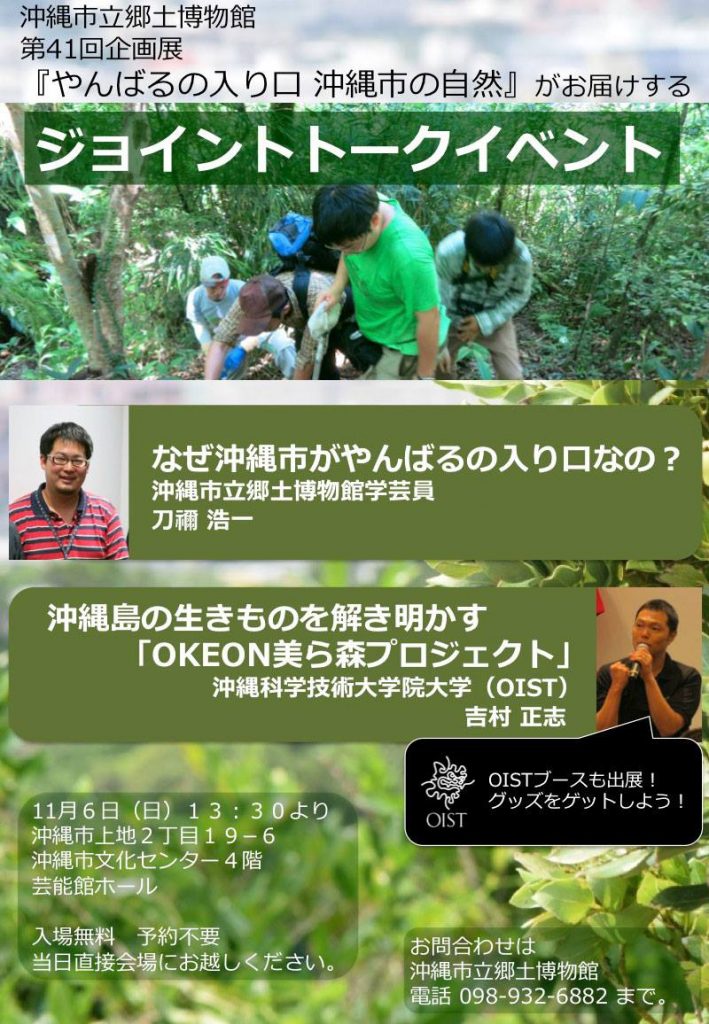
This Sunday, on November 6, 2016, there will be a joint talk event between the Okinawa municipal museum (沖縄市立郷土博物館) and OIST, held at the Okinawa municipal museum. The first talk is going to be presented by the curator of the museum, and it is titled “Why is Okinawa city the entrance to Yanbaru”? The second talk is given by Yoshi, the coordinator of the OKEON Churamori project, and his talk is titled “Figuring out the biodiversity of Okinawa – OKEON Churamori project”.OIST will also have a booth set up at the event.
The talk will start at 1:30 pm and will be held at the 4th floor of the Okinawa Cultural Center, in the entertainment hall.
If you have any questions please contact the Okinawa municipal museum at 098-932-6882.
Opening ceremony for the 41st exhibition at the Okinawa Municipal Museum

While the streets were bustling with Halloween-related activities on October 31, the opening event to the 41st exhibition of the Okinawa municipal museum titled “The entrance to Yanbaru – Nature of Okinawa City” (やんばるの入り口 沖縄市の自然) was also taking place. The exhibition aims to present the results of a five year survey conducted by the Okinawa municipal museum dedicated to documenting the natural environment of Okinawa city.
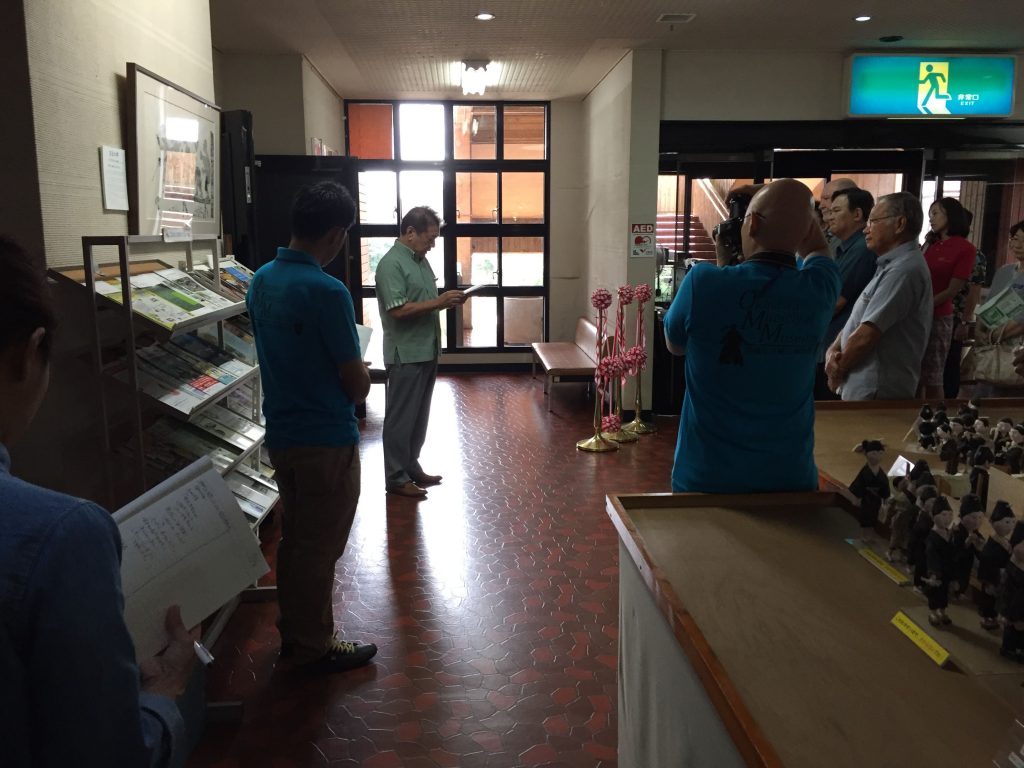
Collaborating with a local museum and sharing the same field site and data, having an allocated space at the local museum exhibition, cooperating with the museum to have a joint talk event about the exhibition, all of the above are great achievements for the OKEON Churamori project given its goal to to revitalize the museum network and the amount of effort that has been put into achieving that.
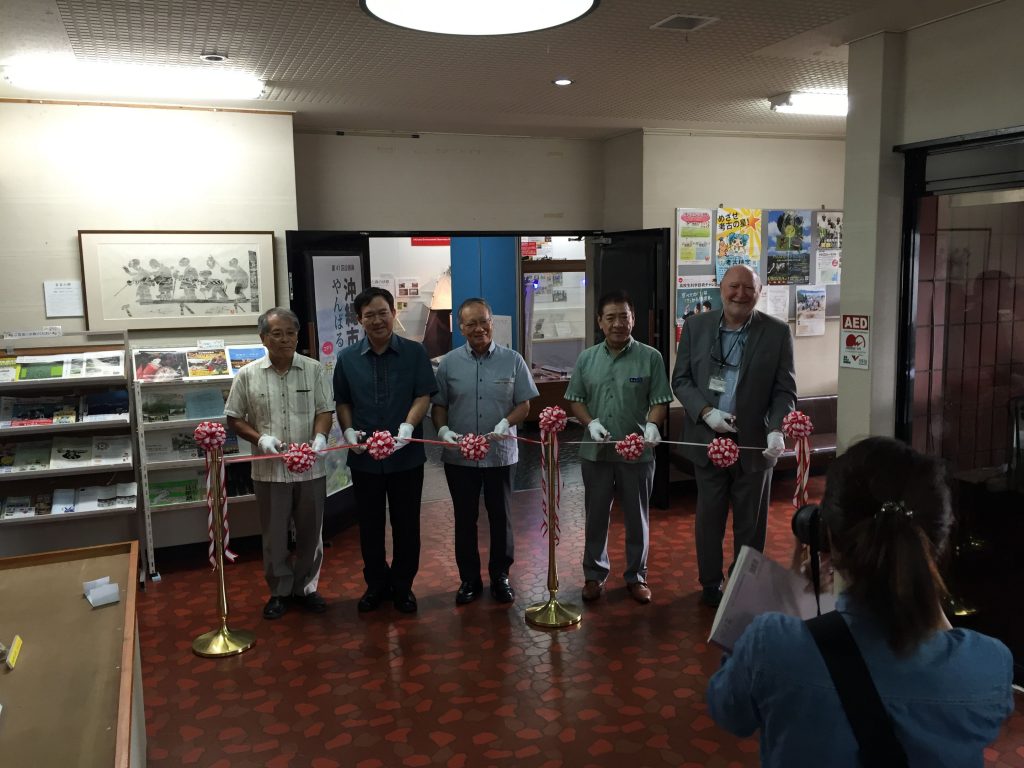
At the opening ceremony, guests from OIST, led by vice president Neil Calder, lined up and participated in a ribbon cutting.
We are very thankful to Kawazo san and Tone san who has continued to assist us, as well as everyone else at the museum. From this point on let’s continue to work together to cultivate a collaborative environment.
Below is the Japanese:
街がハロウィーンイベントで盛り上がった10月31日(月)、沖縄市立郷土博物館では第41回企画展「沖縄市の自然やんばるの自然」のオープニングイベントが行われました。沖縄市立郷土博物館が5年もの時間をかけて、沖縄市内の自然環境を調査した結果の集大成です。
一方「OKEON美ら森プロジェクト」にとっても、地元博物館との協働のもとに同じ調査地とその情報を共有し、地元博物館の企画展の中にコーナーをもち、企画展の中のトークイベントまでをも協賛で行えることは、私たちが目指す博物館ネットワークの活性化への取り組みの大きな大きな成果です。
セレモニーでは、われらが沖縄科学技術大学院大学(OIST)の副学長ニール・コールダーが市長さんを始めとした皆さんに並び、テープカットをしました。
企画展はもちろん、これまでずっと助けてくださったカワゾエさんやとねさんを始めとした、博物館関係者の皆さんに感謝しつつ、今後とも、さらなる協働体制を発展させていけるよう、頑張ります!
Rare ant found in OKEON sample
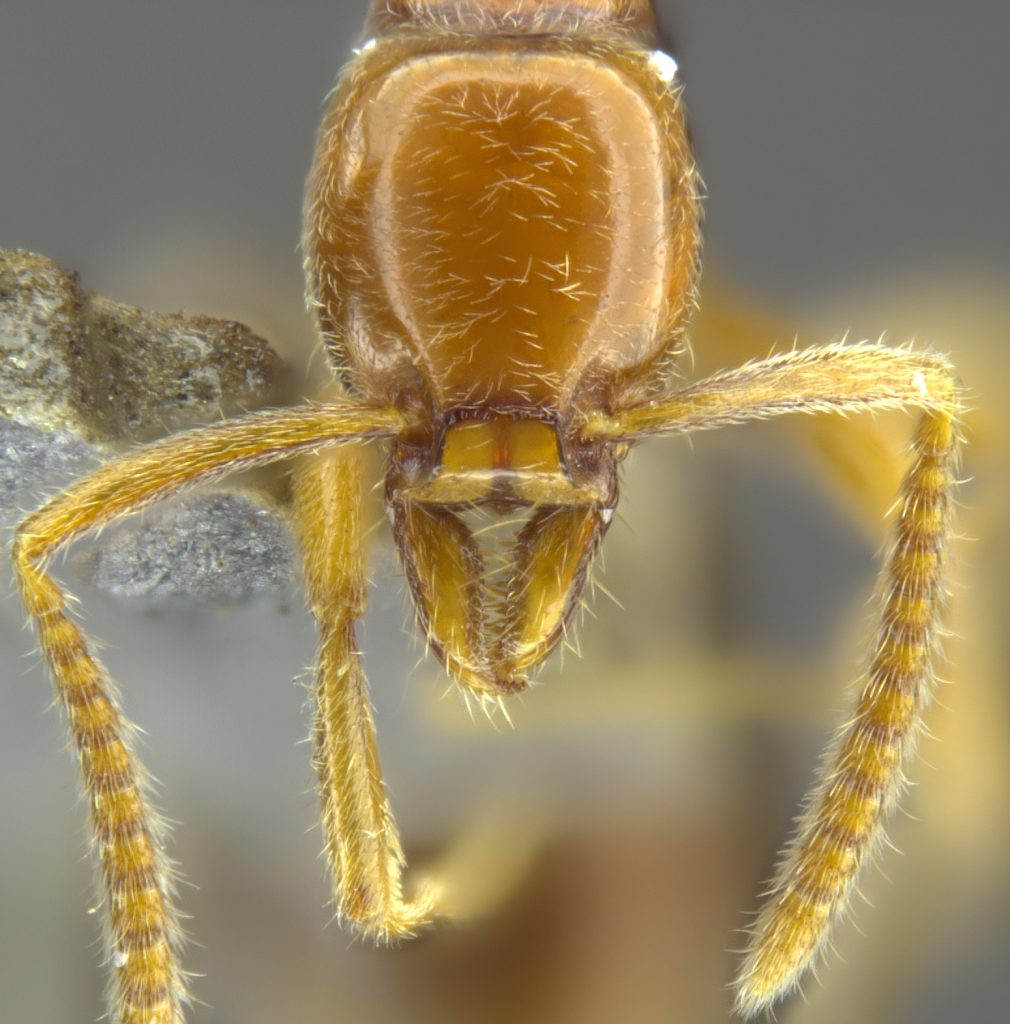
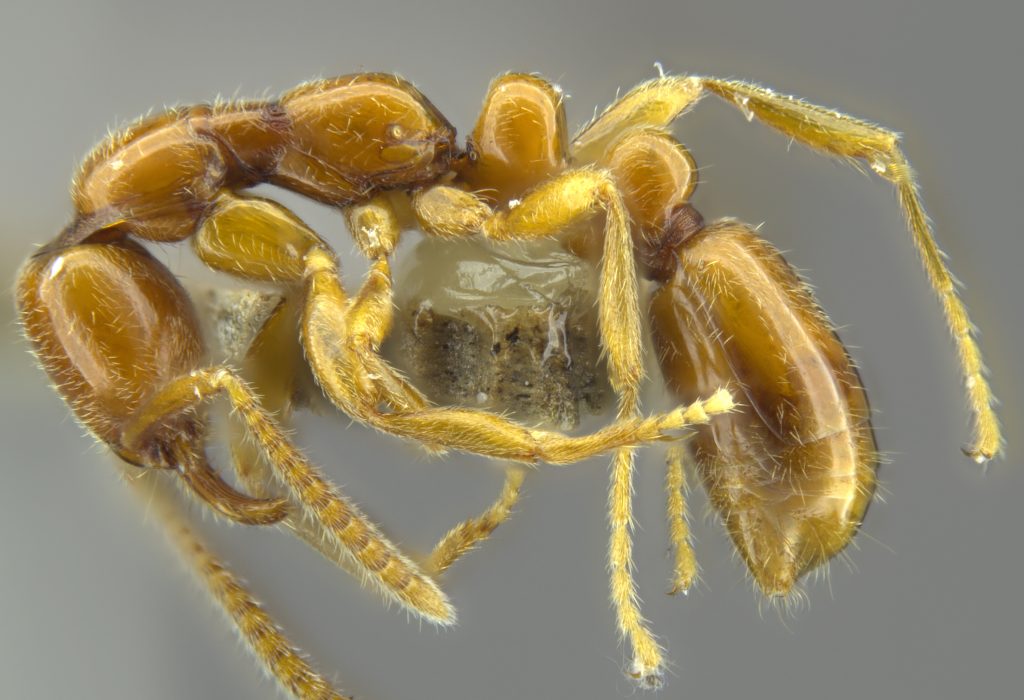
A rarely-collected ant species, Protanilla lini, has been identified from a SLAM trap sample that was collected from Hentona High School (site04) between September and October last year. Protanilla lini belongs to the subfamily Leptanillinae. All members of the family are small, subterranean and often blind ants that are very rarely collected. We know very little about their biology, but we believe they are predators of larger prey such as centipedes or earthworms. It is likely that they perform some form of “dracula ant feeding behavior”, where the adults hunt large prey, but instead of feeding on it themselves they take their larvae to the prey, the adults then drink the haemolymph (or “blood”) of the larvae without causing any physical damage.
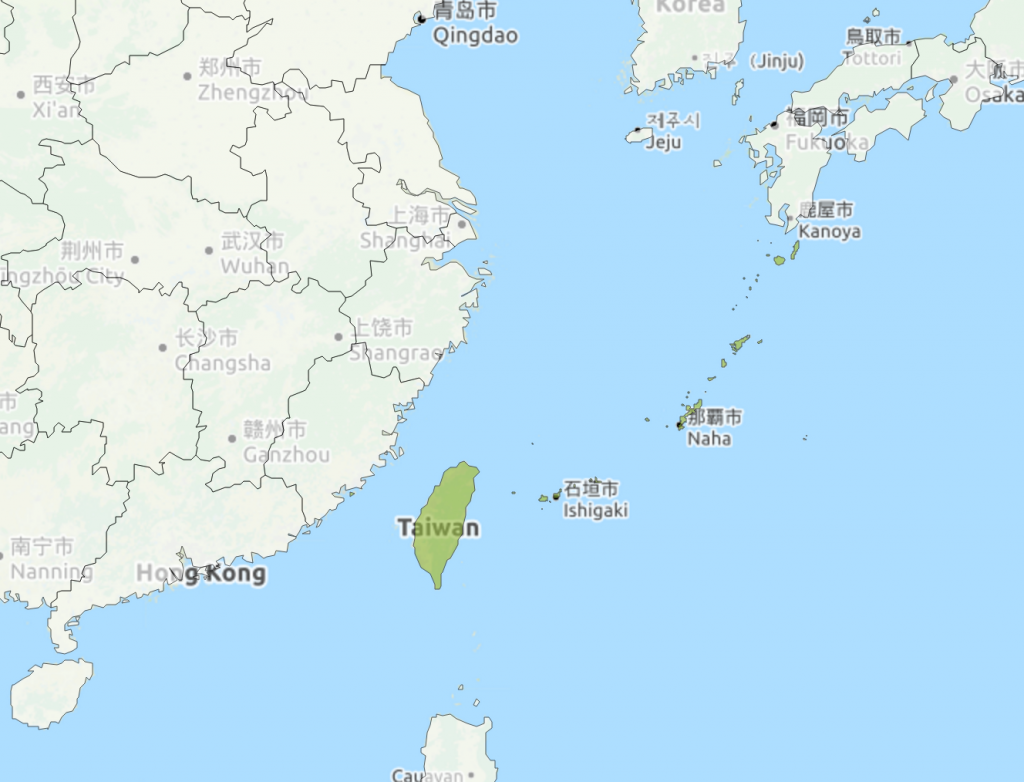
Distribution of Protanilla lini, image from antmaps.org
This species has been recorded only in Taiwan and Okinawa. It has been collected only once before in Okinawa, and a couple of times in Taiwan.
The information and the specimen images were provided by our staff scientist Paco Hita Garcia.
Soundscape of Okinawa during Obon
On top of SLAM traps that collect arthropod samples and weather stations that record physical parameter data, acoustic traps that gather sound data are also set up at various OKEON field sites. The soundscape of the sites differ based on their habitats and their proximity to urban areas, as illustrated by the sounds collected during the period of Obon in Okinawa.
Obon is a Japanese Buddhist custom to honor the spirits of one’s ancestors. During Obon, Bon dance (bon odori) is performed to welcome the spirits of the dead. The bon dance performed in Okinawa is known as eisa. Across different OKEON sites we can hear different eisa dances with different species either in the foreground or the background. For example, in Nago the eisa dance is in the background, with sounds of many cricket species (Hexacentrus unicolor, Cardiodactylus guttulus, Ornebius kanetaki, Ornebius longipennis) in the foreground while in Nakagusuku the eisa song is in the foreground. By contrast, given its well-preserved continuous forests far from civilization, the soundscape of Yanbaru consists only of natural sounds.
Below are the soundscapes of four different OKEON sites during Obon as well as part of their spectrograms:
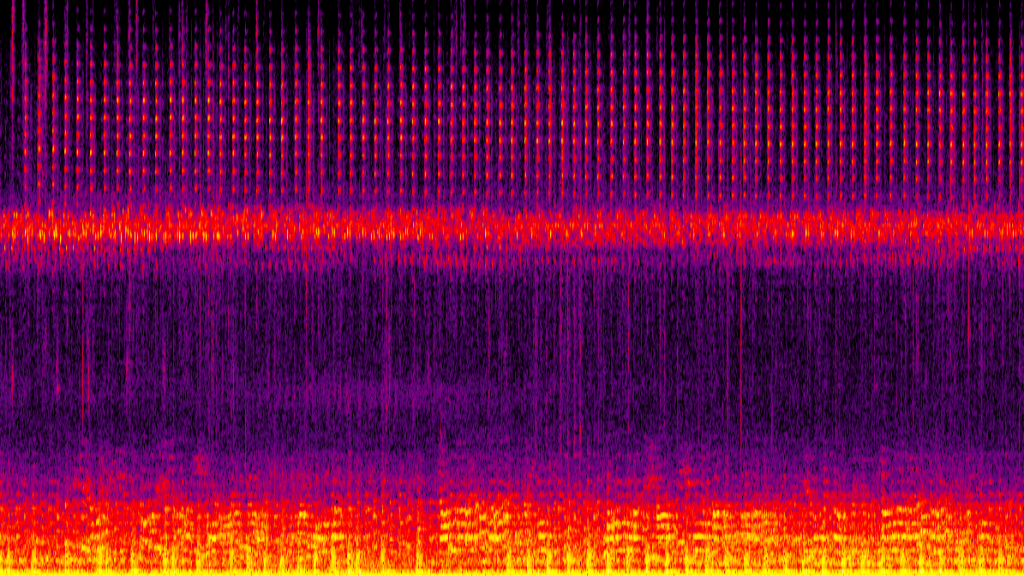
Soundscape of Nago on the night of Obon, recorded from Nago Castle Park
Link to sound here
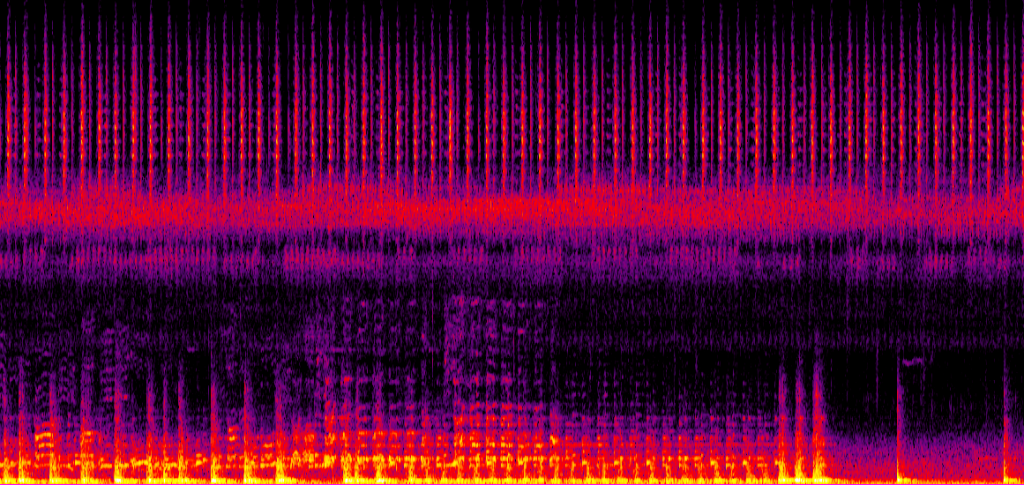
Soundscape of Nakagusuku on the night of Obon, recorded at Nakagusuku Park
Link to sound here
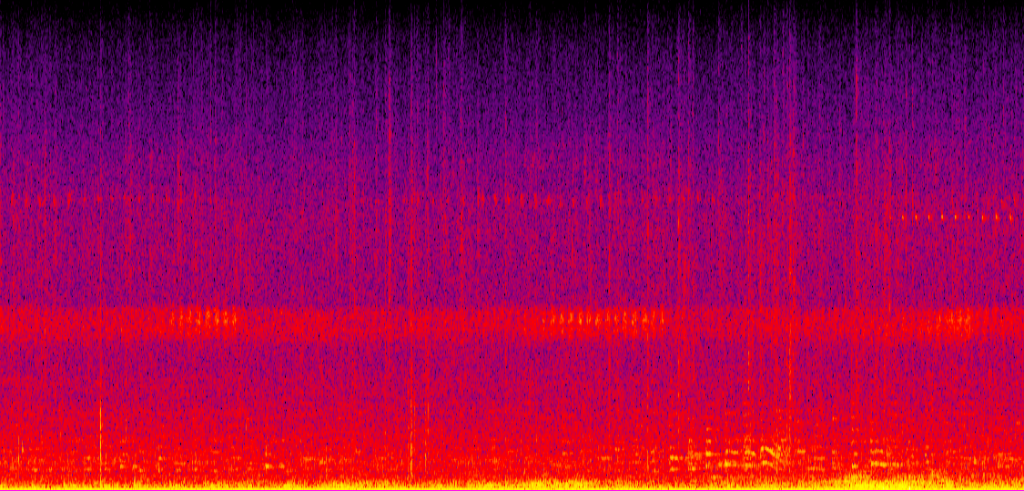
Soundscape of Naha on the night of Obon, recorded from Sueyoshi Park.
Link to sound here
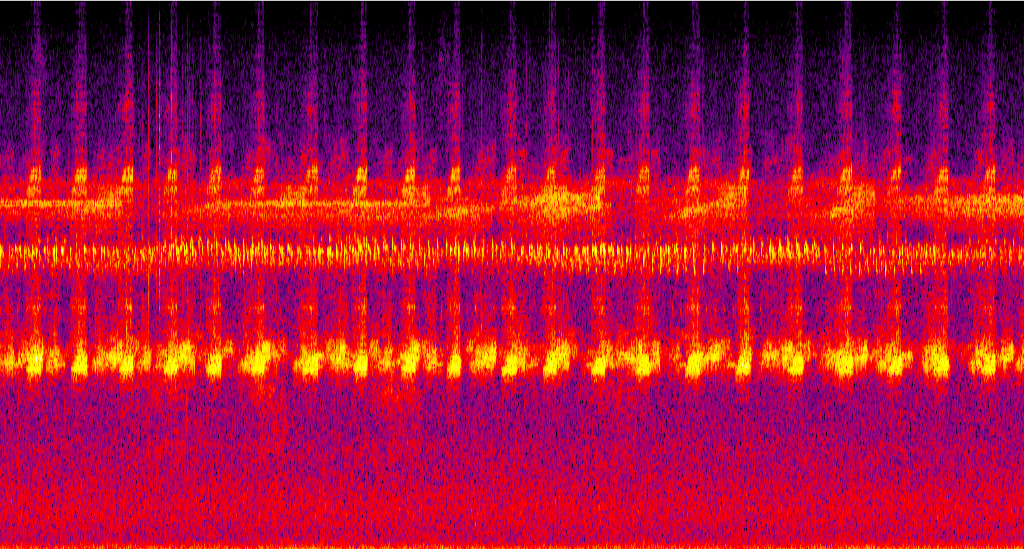
Yanbaru Forest on the night of Obon, recorded at the Yanbaru Discovery Forest Park.
Link to sound here
Sound data contributed by our Post-Doctoral researcher Nicholas Friedman.



